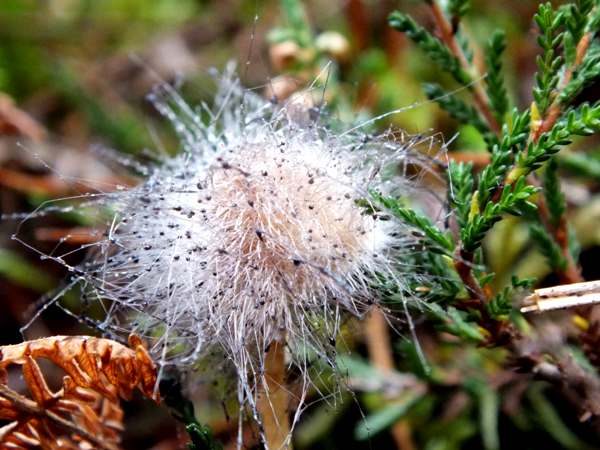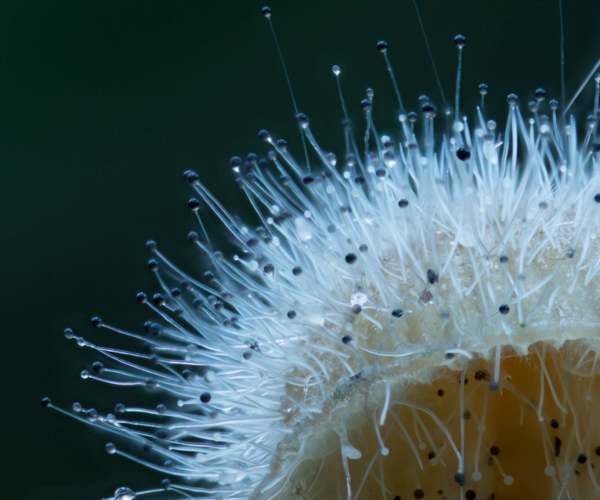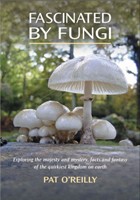Spinellus fusiger (Link) Tiegh. - Bonnet Mould
Phylum: Zygomycota - Class: Incertae sedis - Order: Mucorales - Family: Phycomycetaceae
Distribution - Taxonomic History - Etymology - Identification - Reference Sources

This very common little parasite of Mycena species (and of several other mushroom genera) is known as a pin mould. It appears on the caps of larger fungi as erect pale brownish-yellow sporangiophores (specialised hyphae) on which its zygospores are produced.
Bonnet Mould and the other members of the Spinellus genus are able to reproduce when 'pins' from the same mycelium contact one another; such fungi are termed 'homothalic'.
The closeup picture shown below was kindly contributed by David Kelly.

Distribution
Spinellus fusiger is the most common and widespread of the parasitic fungi seen on bonnet mushrooms in Britain and Ireland. This species occurs across mainland Europe as well as in Asia and North America.
Taxonomic history
This fungus species was described scientifically in 1824 by German naturalist Johann Heinrich Friedrich Link (1767 - 1850), who gave it the binomial scientific name Mucor fusiger. In 1875 French mycologist Phillippe Édouard Léon van Tieghem (1839 - 1914) rediscribed this species, transferring it to Spinellus, a new genus that was circumscribed by Tieghen at that same time.
Synonyms of Spinellus fusiger include Mucor fusiger Link, Mucor macrocarpus Corda, andSpinellus macrocarpus (Corda) P. Karst.
Etymology
The generic name Spinellus means little spike or thorn, while the specific epithet fusiger means 'like a spindl'e. Spindly spikes then? If so the sharp end must be stuck inside the host bonnet mushroom!
Identification guide
The tiny fruitbodies look very much like pins. The sporangiophores (stalks) are typically 1 to 3cm long, but to see any detail you really need to use a micrscope.

Reference Sources
Pat O'Reilly (2016). Fascinated by Fungi, First Nature Publishing
BMS List of English Names for Fungi
Paul M. Kirk, Paul F. Cannon, David W. Minter and J. A. Stalpers. (2008). Dictionary of the Fungi; CABI.
Taxonomic history and synonym information on these pages is drawn from many sources but in particular from the British Mycological Society's GB Checklist of Fungi.
Acknowledgements
This page includes pictures kindly contributed by David Kelly.
Fascinated by Fungi. Back by popular demand, Pat O'Reilly's best-selling 450-page hardback book is available now. The latest second edition was republished with a sparkling new cover design in September 2022 by Coch-y-Bonddu Books. Full details and copies are available from the publisher's online bookshop...

